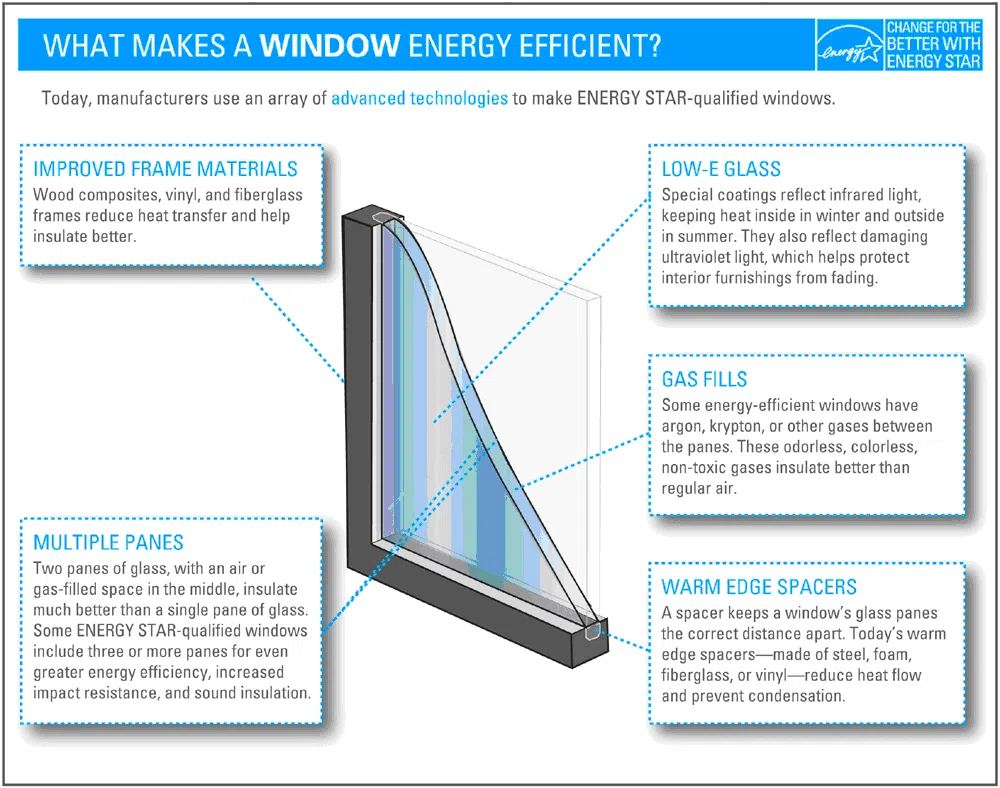

Since the first presidential declaration in 1991, the month of October has been designated as National Energy Awareness Month, “a national effort to underscore how central energy is to our national prosperity, security, and environmental well-being”. As the month comes to a close we encourage you to be proactive about making your home as energy efficient as possible.
Transforming your home into an energy efficient system does not mean altering your lifestyle into one of frugality and constraint. Although it is helpful to be mindful about turning off lights and unplugging unused electronics, being energy efficient is about making smart changes that allow the utilization of as much energy as possible. According to a recent report from the Natural Resources Defense Council, “Energy efficiency is America’s most productive energy resource”.
Let’s celebrate National Energy Awareness Month by embracing positive energy changes that cost far less than the energy they displace.
1. Upgrade Your Wall Outlets

Here’s an interesting idea, change a few wall outlets to directly charge up your USB devices, while also eliminating ‘Vampire Power Draw’. Not only will this help unclutter your outlet space, but products like U-Socket are designed with energy efficiency in mind. U-Socket eliminates the leaking of unused energy by simply shutting off when a device is still plugged in the outlet but the energy is no longer needed. This easy fix can save you up to $20/year with the added bonus of newly earned LEED points. At $24.95 U-Socket is fairly costly for an outlet, but it’s handiness and smart efficiency is well worth the investment. Did we mention it’s a DIY product?
2. Be Smart with Your Light Bulbs- Choose CFL’s or LED’s

According to a study released by ENERGY STAR, “If every American home replaced just one light bulb with a light bulb that’s earned the ENERGY STAR, we would save enough energy to light 3 million homes for a year, save about $600 million in annual energy costs, and prevent 9 billion pounds of greenhouse gas emissions per year, equivalent to those from about 800,000 cars.”
Think of all the energy savings that result by replacing all of the light bulbs in your home with ENERGY STAR certified bulbs. This straightforward step is one of the cheapest and easiest energy efficiency moves you can make for your home and the environment. To see the drastic differences between Incandescent bulbs, CFL’s and LED’s check out this comprehensive chart which compares important factors such as lifespan, watts used and average yearly cost of operation.
3. Update Your Appliances

Have you changed your light bulbs? The next step is getting the ENERGY STAR certification with your old appliances. Heating and cooling systems, refrigerators and washing machines use a great deal of energy. The standard fridge now uses 40-60% less energy than models sold before 2000. What a difference! Let’s not forget about all of the federal tax credits offered for purchasing ENERGY STAR certified products. Make sure you research the models that qualify for the credit before purchasing your new appliances.
If you can’t make the investment quite yet, simply maintaining these appliances regularly saves a bundle of cash and energy. Change air filters regularly, clean the coils on the back of your fridge and tune up your HVAC equipment yearly.
4. Install a Programmable Thermostat
Investing about an hour of your time and as little as $25 to install a programmable thermostat in your home can save you about $200 a year. That’s a lot of energy saved with absolutely no hassle included. Here’s some DIY instructions from This Old House that will help the installation run even smoother.
5. Check for Drafts
As these cool autumn October days pass us by you may be starting to feel chilly drafts creeping through certain areas of your home. No wonder Energy Awareness Month is in October! Sealing up these air leaks with caulk is an easy fix that will save lots of energy when heating your home this winter. In fact, the average home loses 30% of its heating and cooling energy through air leaks. A simple trick to test for air leaks is to hold a candle up to closed windows and other areas that may have leaks. If the candle flame moves there is a leak.
Dig out the caulking gun you used for your InSoFast project and caulk up those leaks! It will save you money on your energy bills and keep out the chills.
6. Update Windows

Caulking up leaks near windows is helpful but if your windows are still leaking lots of cold air, perhaps it’s time for an update. Energy efficient windows play a huge role in reducing energy consumption within the home. Although this may be one of the more costly investments on our list, it is well worth the price. ENERGY STAR rated windows cause household energy bills to lower by about 7-15%.
7. Insulate

The last one is a given and maybe you’ve already tackled your InSoFast insulation project. Chances are there may be areas of your home still in need of some insulation. InSoFast works on floors, ceilings, attics, interiors, and exteriors. As a homeowner with strict budget concerns, the DIY panels are a great solution because you can completely eliminate the cost of hiring a professional without sacrificing the effectiveness of the project.
Hassle-free efficiency.
One of the most important things you can do to embrace National Energy Awareness Month is to educate yourself and those around you about the importance of being responsible with energy.
Sources:

